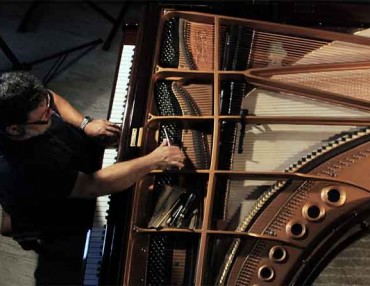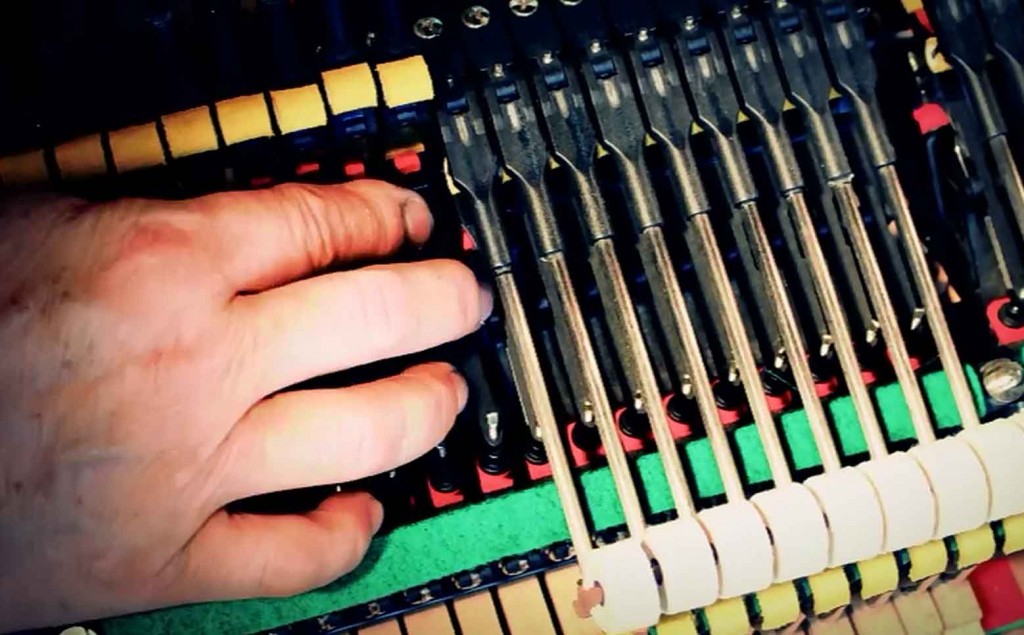
TUNING
Learn more
A series of more than 35 steps that optimize the key and action movement. The apparently simple (approximately 10 mm) key dip is extremely complex involving almost 1000 moving action parts made of wood, bronze, leather, felt and tin alloys.
Warping, wear, corrosion and friction cause all sorts of uneven feel and movement and thus regulators have been installed in the action to compensate and fully recover original uniform movement.
The artist’s finger tips are so sensitive that simple measurements and monitoring instruments and scales are not enough to complete a regulation. The technician is called to understand the fine movements of all interactive parts and finish the job by “feel”, crosschecking continuously all previous steps.
Within limits we do have a choice to regulate our piano to extract more power (deeper dip, longer blow, less after touch), or more control and speed (the opposite of above).
It is right to check basic and even regulation in every tuning appointment. Neglect will cause such an action deregulation that extra appointments will be necessary to put things back in order.
